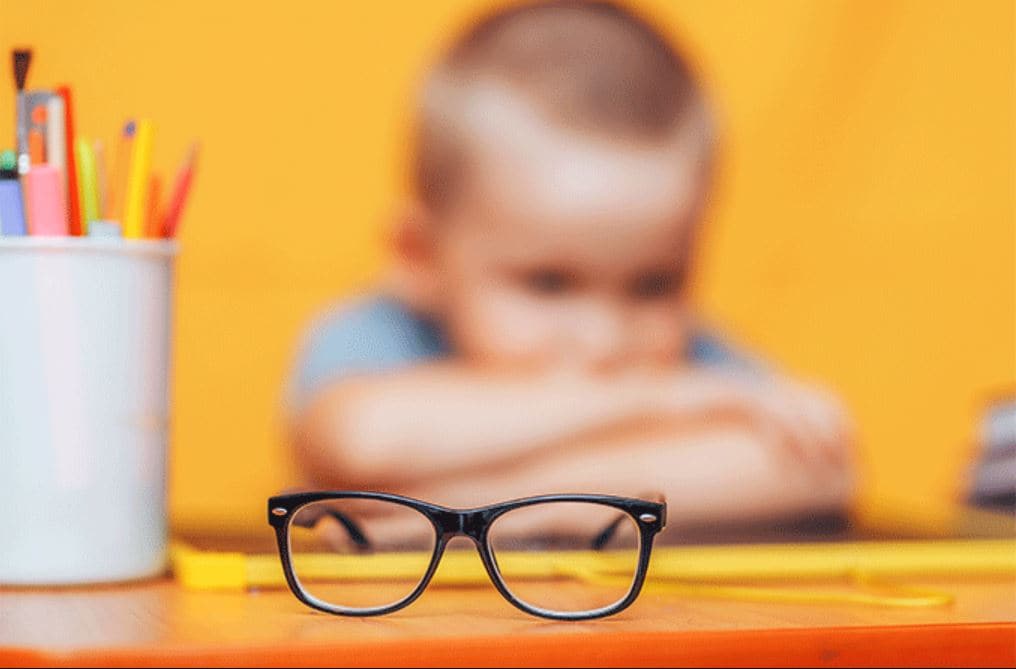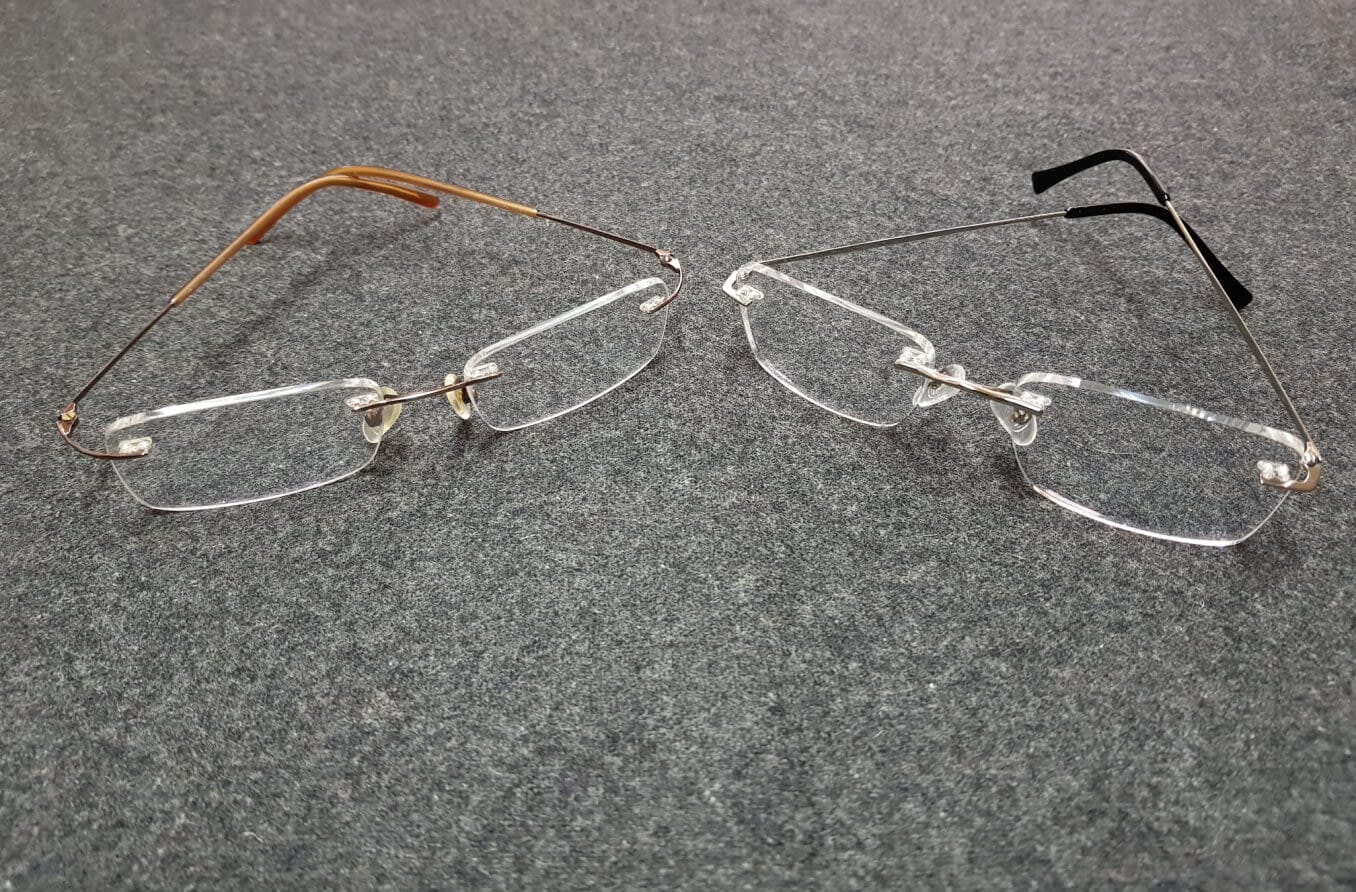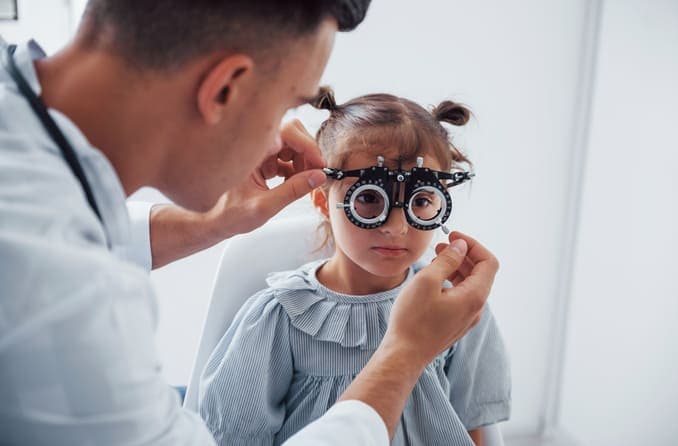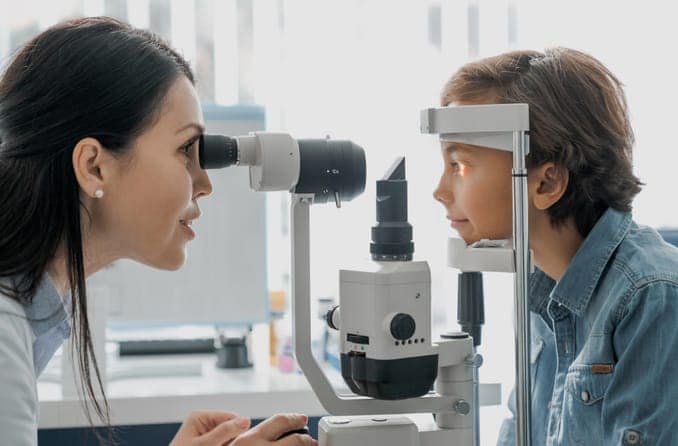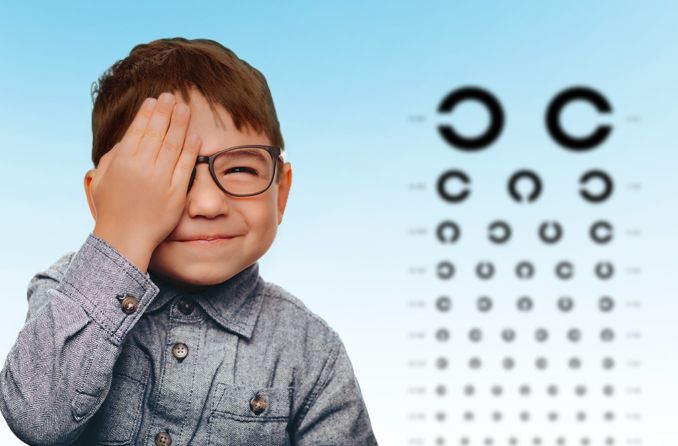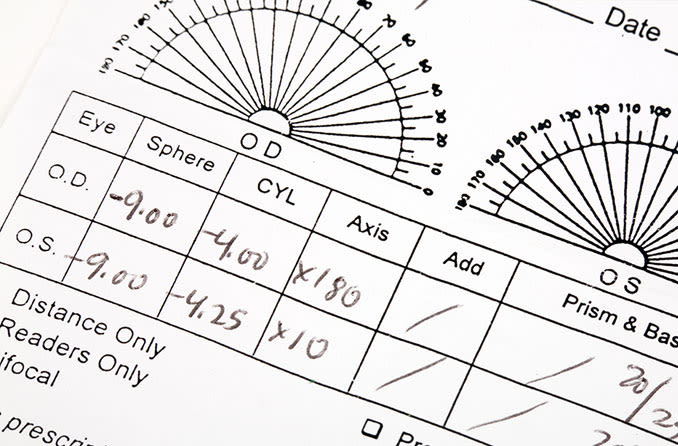Understanding the importance of glasses for kids
Clear vision is a key part of a child’s learning, development and quality of life. When vision problems go uncorrected, they can affect everything from classroom performance to social interaction. Prescription glasses not only improve eyesight but also support healthy visual development.
Getting children to wear their glasses regularly can be a challenge at first. Letting them help choose their frames and using positive reinforcement often makes them more excited to wear their glasses. A well-fitting, comfortable pair that suits their style can also make a big difference. If your child continues to resist, consider checking in with their eye care provider for extra support.
How to choose the right glasses for your child
Glasses for babies and children need to be both functional and durable. From lens materials to frame design, selecting the right pair involves considering how well they’ll support your child’s vision and daily activities. Consider the following factors when making your choice:
- Lens material – Polycarbonate lenses are a great option for kids because they are designed to withstand impact. They can also filter ultraviolet (UV) rays without the need for additional coatings.
- Frames – Durability is a key consideration when choosing frames for your child’s glasses. Plastic frames are often best for babies and younger children. Titanium frames may be ideal for older children or those who are active and prone to damaging their eyewear.
- Fit – A proper fit is crucial. If your child’s glasses do not fit properly, they can fall off and your child will be less likely to wear them. An optician can help adjust their glasses to make sure they are comfortable and snug.
- Accessories – To help ensure your child’s frames stay properly positioned, consider using eyewear accessories. Eyeglass straps or ear grips can be especially useful for younger children and babies with glasses.
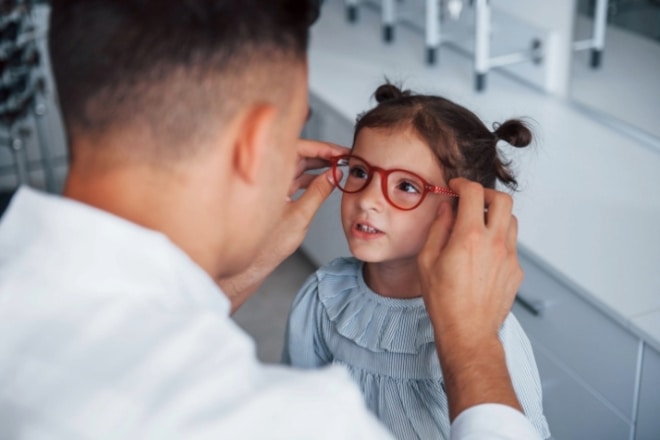
Involve your child in the selection process
A great way to get your child excited about wearing glasses is to make them part of the selection process. Allow them to browse different options and try on a wide variety of frames. They can share their thoughts on what they like best and feel involved in choosing the right pair.
Make wearing glasses a positive experience
Adjusting to glasses can be easy for some kids, but others may feel unsure or resistant at first. It’s normal for the transition to take time, especially if the glasses feel unfamiliar or if the child is self-conscious about their appearance.
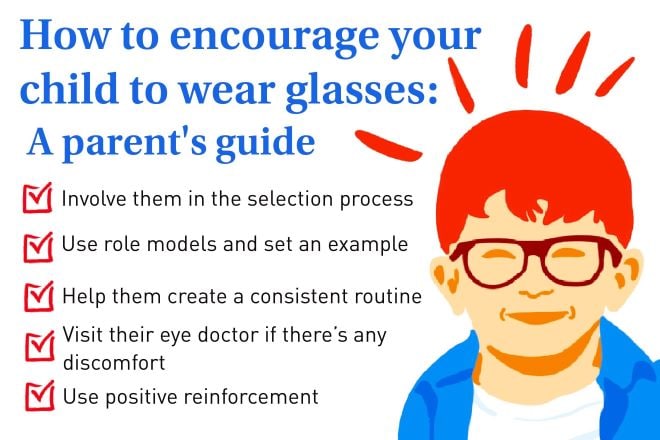
During this period, a parent’s attitude can make a big impact. Staying upbeat, offering reassurance and treating glasses as something positive can help build your child’s confidence. Creating a supportive environment can go a long way in helping your child embrace their new eyewear.
Use role models and celebrities
A great way to get your child excited about their new specs is by showing them that lots of other people wear them too. If you wear glasses, you can be a great example of how to use and care for them properly. Additionally, pointing out popular celebrities or role models who wear glasses can be a great help.
Some famous people who wear glasses include:
- Tom Holland – An actor known for portraying Spider-Man
- Jason Momoa – An actor known for portraying Aquaman
- Robert Downey Jr. – An actor known for portraying Iron Man
- Emma Watson – An actress known for her role as Hermione Granger in the “Harry Potter” series
- Justin Timberlake – A singer and actor known for voicing Branch in the “Trolls” movies
- Zendaya – A singer and actress known for her roles in “The Greatest Showman” and “Spider-Man”
- Joe Jonas – A singer and member of the Jonas Brothers
Practical tips for daily wear
While it may be normal for your child to feel hesitant about using their new glasses, it can still seem like a difficult hurdle to overcome. Here are some practical tips for encouraging kids to wear their glasses:
- Offer praise and positive reinforcement whenever they use them.
- Set a good example by wearing your own glasses, if applicable.
- Show them how to care for their glasses so they feel more responsible and in control.
- Read children’s books that feature characters who wear glasses to help normalize the experience.
- Take photos or let them see themselves in the mirror while offering positive affirmations about how great they look in their specs.
- Point out other kids with glasses so that they feel less alone.
Handling resistance and challenges
Many children face challenges when adjusting to glasses, especially in the early stages. Below are some common issues and simple ways to help manage them effectively:
- Losing or mishandling glasses – Teach your child to remove their glasses with both hands and store them in a protective case when not in use.
- Forgetting to wear glasses – Help your child build a consistent routine, explaining why using their glasses is necessary to enhance their vision.
- Resisting or refusing to wear glasses – Offer gentle reminders and positive reinforcement to encourage regular use.
- Discomfort while wearing glasses – If your child complains about discomfort, schedule a follow-up visit with their eye doctor to check the fit of their glasses and their vision prescription.
- Glasses slipping or not fitting correctly – Visit an optician for adjustments to ensure the glasses fit securely and comfortably.
Seeking professional help
If your child continues to avoid wearing their glasses, it may be helpful to consult a pediatric ophthalmologist or a pediatric optometrist. A specialist may be able to identify any underlying issues that might be causing discomfort and reevaluate their glasses prescription. They can also suggest specific techniques to help your child feel more comfortable and motivated to wear their glasses regularly.
When a farsighted child has trouble adjusting to their new prescription glasses, eye drops like atropine may be prescribed to help. These drops temporarily relax the eye’s focusing muscles, making their eyesight less clear unless they wear their eyeglasses. Atropine drops will not help if your child’s prescription is for nearsightedness.
Community support and resources

Support groups and online forums can be a valuable resource for parents facing similar challenges. Sharing experiences, tips and encouragement with others can provide reassurance and practical advice to help your child adjust to wearing glasses.
LEARN MORE: Why pediatric eye exams are so important
